Have Questions or Comments? Please ask your questions in the comments section below. We attempt to respond to ALL questions or comments.
Transcript:
Geographic Farming – How to Make REAL Money – Part 3 – Choosing the List
GeoFarming
Caroline: Hi Everyone! This is Caroline Springer. Welcome to the next session of Get Sellers Calling You with Beatty Carmichael. Beatty is the CEO of Master Grabber and the creator of Agent Dominator. He is also one of the top marketing experts in the real estate field.
Today we are continuing on in our conversation about geographic farming. We’ve had a couple of calls and we are creating them into a little series. Today we are continuing on with our conversations on geographic farming. Just a reminder for those of you on our live call, we do have the lines muted, but will open them up for questions and answers at the end.
Welcome, Beatty. I’m excited to continue on in our conversation. I think we’ve had a lot of great content so far and I’m interested to see where we go today.
Beatty: Well, I am too. This is a lot of fun. Geographic farming is all about process and if you know anything about me, I’m all about process. If you get the process right, you get the outcome right. So, this is really a lot of fun for me to actually dissect the process a little bit more fully and to talk about it.
In fact, I have to tell you a quick story as we get started. We have a client who has just come on board. She was originally going to do something with her sphere of influence. But she realized that her personal contact’s list really is mostly in another area of town that she doesn’t want to have to keep traveling to because she has moved somewhere else. So she doesn’t have contacts where she wants to be marketing. We determined, or she determined, that the best thing for her would be geographic farming. She said, “So I’m thinking about targeting this area.” I said, “Well, why?” She said, “Because I like it. It’s the area where I want to go.” So I asked her the question that I ask all agents, because most agents don’t stop and think about this question. I said, “Well let me ask you (and her name is Courtney). Well let me ask you Courtney, are you more interested in being the dominate agent in that area or are you more interested in making the most money for your investment in geographic farming? Because they may be two completely different answers.” She thought about it for a moment. There was this pause and she said, “I think I want to make the most money.” I said, “Great, so now let’s talk about how to pick the right farm. How do you pick this farm? Is it good turnover?” She said, “What’s turnover?” Right there I knew.
This is what most agents do. It’s almost like that nursery rhyme, eenie meenie miney mo, pick a farm by its toe. It’s almost like she picked the place she wanted to be, but she had no reasoning behind it. When you take process out, then you increase risk. Once you put solid process in, you minimize risk. The end of the story is, she spent probably 30 minutes—I walked her through what to do which is actually what we did on the last call—going through that process and she found another area to target in the general area of where she wants to sell that’s going to produce about double the results as where she had picked originally. So, if you just take a little time up front to do it right, your long-term gain is going to be huge.
Back to your comment, I’m excited to be here and share this myself.
Caroline: Wow. I love that you had a real life example right in the middle of us discussing geographic farming and you really go put to practice everything we talked about last week with how to select a farm. That’s a good testimonial.
Beatty: Don’t be too impressed. I put this to practice all the time and it’s just that this agent now realizes there is a better way to do it than just picking something out of the blue. But it was fun.
Caroline: Well good. It’s a good testimony for our listeners to hear. It’s a real life example that you do a whole lot more often than we might think. We talked about how to select a farm. Would you like to do maybe a quick synopsis of what we have gone over so far before we go into the mailing list today?
Beatty: We’ve done two calls on this so far. The first one was just kind of a broad overview to lay the groundwork of where the rest of these calls are going. Then last week’s call kind of touched very specifically onto what I was doing with this agent named Courtney just two days ago. That’s walking through how you pick a farm. Today, I want to talk about how you select the right mailing list. Then over the next several calls we are going to talk about what types of expectations you should have when you start to do a farm. If you are going to start making an investment, it’s good for you to know when you should expect to get any return out of it. Because up front, you are putting money in…. money, money, money, money and nothing is coming out. So what are your expectations, and when it starts to come out and how much? We are going to also talk about 10 low cost ways you can touch a farm. When you are doing farming, it’s not just mailing a postcard. It’s a lot more if you want to get maximum results.
I’ve got to tell you another story about geographic farming. One of our clients is a guy named Nelson. He is targeting a 1500 home farm that has great turnover; it’s like 8%. There are 130 – 150 homes selling every year. When he started with us, he was a nobody there. He did postcard mailings and a few other things—we’ll talk about those few other things. Within 18 months (a year and a half), he controlled 22% of all the listings going on in that market. I contacted him a few months ago—and this is now like three or four years later—and he is at 50%. He absolutely dominates it. By the way, when he was at 22%, he was doing 7 times the volume as the next closest agent. So this really can make you a lot of money if you do it right.
So we’ll be talking about those low cost ways you can additionally touch your farm, which is what he was doing. Then the last call or two that we’ll be doing on this is actually talking about specifically how to do postcard marketing within that farm and what types of postcards and how to design them to get maximum results for the same dollars spent. So that is kind of where we are going to go in this series.
Caroline: Wow. I’m excited to hear more testimonies like that. I think when we can hear and apply those real life examples, that really kind of gives us that extra fire under us to go out and make these things happen and to put these things in practice. I say keep those testimonies coming.
So today, I know we were going to talk about how to select the mailing list. Did you want to just jump right in and share that or maybe you want to talk about the next step you take after you select your farm. Like, here is step one after that and so forth.
Beatty: Once you select a farm, once you go through the process we talked about last, then, the next step is, you need to acquire a list. There is actually one, two, three, four different ways that you can acquire lists. Each one has its own advantages, pros or cons, and I want to kind of cover this. I’m not sure if there is one, best type of list. It really depends on the farm. It depends on what you are doing. It depends on your objectives. So it’s not that there is a right or wrong; it’s just that you want to remember that not all lists are created equal. So let’s talk about those.
The first type of list is what I call very simply, “the entire list.” Now, let’s keep this real simple. Let me ask you, Caroline, when I use the words “entire list,” what do you think that means?
Caroline: I would think every available address in a farm.
Beatty: That’s right. So one way to do geographic farming is you mail every single household in a farm all of the time. And this is a great way to do it. You can use EDDM, Every Door Direct Mail, it’s a post office service. It’s a lot of hassle to get it going and to actually implement all the time, but it can save you money. So you can either trade hours for dollars or you can just hire a service to mail postcards for you. There are a lot of places online that will do that. You just upload a mailing list and mail them out.
So the question is, why would you want to mail the entire list? And why would you not want to mail the entire list? So let’s talk about this. You’ve gone through your process; you’ve picked a good area. Data shows you are hitting everything well. Then I would suggest the reason to mail the entire list is because you are in there long term. And long term, if you think about it, everyone is eventually going to sell. Long term means that most everyone is eventually going to turn into a friend who is saying, “I’m thinking about selling. Do you know of an agent I should use?” And so long term, mailing the entire list is going to give you maximum exposure and maximum opportunity for as many sales as possible. Also, if you are mailing the entire list, the cost to mail the full list versus the return on a single listing is great enough that the incremental cost of doing the entire list versus some sort of abridged or truncated list is negligible in light of potential increased sales that you can get out of it. So that’s one reason to do an entire list.
To get the list, you can typically pull it from an MLS or you can pull it from tax records. You can go to any list provider and you can say, “Give me a list of all the addresses in this area.” There are several companies that are list providers that you can go to and literally map out the areas on their map, where you want to target, and they will just suck those addresses in. We actually use a similar service for our clients when we do geographic farming for them. They outsource the stuff to us, then we’ll go acquire that list. So you can do the entire list.
The challenge in doing the entire list is, it’s more expensive. So let’s say you have a 500 home farm. You are mailing 500 postcards every single time. If you want to do 18 touches a year—we’ll talk about mailing frequency when we get to the postcards—but if you are going to mail 18 times a year, that’s 500 x 18. That’s a lot of money in printing and most especially in postage. Another downside of mailing the entire list is you have a lot more cash going in before you have enough cash coming out to actually start to cover your cost. So you increase your cost and you have to have a longer holding time. So if you’ve got enough of resources within your marketing budget to sustain, then that’s usually not an issue. But if you are a smaller agent or you have a tight budget for whatever reason, then being a little more frugal on that budget may be a better route to go when you first get started. That’s targeting the entire list.
The second thing you can do is you can split the list with a wedge (that’s what I call it). This is an expression that suggests that rather than splitting it with a razorblade, where it is precise and exact, you just take a wedge and slam it in there and you separate out “mostly” versus “not as most likely.”
So how would you think, Caroline, if you wanted to take that list, let’s say 500 homes, and you wanted to split it with a wedge and just kind of reduce the total number of you are targeting without hurting significantly your chances of getting a sale, what do you think would be the best route to do something like that? Any ideas?
Caroline: Maybe I would think of taking out very recently sold homes, in less than two years, or even, on the total opposite end, taking out the homes that maybe have been there 20 plus years. Maybe those people are just staying there; they aren’t looking to sell anytime soon.
Beatty: Great. So let’s pause there and talk about that. Excellent idea. So you have a community. Maybe it has been around for 35 years, let’s say. Consider those people who have been living there for 20 – 25 years, chances are, they are probably going to stay there. So now we are talking about length of residence (LOR). It’s easy to find length of residence. Frequently your tax records will indicate a length of residence. Sometimes your MLS records can do that too. Based on length of residence, you eliminate those who have been there for a long time because they are likely going to stay there. You eliminate those, like you said, who have bought in the last year or two because more than likely they are not about to sell. So length of residence is one way you can split the farm with a wedge.
What’s another way you can do it? I’m not saying another way instead of, but are there any other things we can look at to narrow that scope down even further?
Caroline: Hmm… maybe it has something to do with other realtors in the area?
Beatty: The reasons I like to ask you on this is because most realtors out there listening to this call or to the podcast, they are just like you, they haven’t thought about it. So now they start to think and go, how could I take that list and narrow it down because I’m out of my wheelhouse.
Here is another thing you can do: Consider property type. Let’s say that area you have a mixture of multi-family homes and single-family homes. So you look at where the sales are occurring. Are they mostly multi-family or mostly in single-family, and if there is a large disparity between them? Or, is if there is a large disparity in sales price? Multi-family homes are selling at an average $120,000. Single-family homes are selling an average of $280,000. Well, why not eliminate the low prices so you are targeting the high prices? You can do it by the home type.
So we’ve split the farm with a wedge with length of residence. Then we’ve split that group out based on home type. There is one other thing we can do that can be real effective at times in splitting it with a wedge. Can you think of what that final thing might be?
Caroline: Would it be something about pricing? Is that what you are thinking of?
Beatty: It actually is. So now we are going to look at the farm based on price bands. So let’s say if this community is a community that everything is priced—once you get out multi-family—between $250,000 and $300,000, then separating by price is not going to be as effective because you don’t have much margin there. But, let’s say you are in an area where you have a wide range of pricing, where on the single-family homes, they range from a value of $150,000 all the way up to $500,000. You look at the sales that have been going on and you find that the majority of those sales have been somewhere in the low twos to the high twos. Maybe 80% of the sales are between $220,000 and $290,000. If you knew that, then you could eliminate everything but that price band. Now we’ve narrowed it by length or residence. We’ve narrowed it by home type. We’ve narrowed it by price. We’d get this 500 home territory and maybe we now condense it down to 250 or 200 or maybe 300. But somewhere in there, we’ve eliminated a lot of homes that are less likely to sell. Do you see how that works?
Caroline: Absolutely. I think that makes perfect sense. Those are probably easy features to find, no matter what kind of MLS or other ways you are trying to research it. There are easy ways to help you narrow that scope and find the right people to market to.
Beatty: Yes, this is pretty simple data. All it takes is some elbow grease or maybe finger grease if you are using your mouse a lot. It takes a little time and effort to start to whittle it down. So what are the advantages of splitting the list with a wedge? The advantages are pretty simple. It allows you to more specifically target an area that is going to produce the majority of the sales that you want. So now, rather than having a lot of waste marketing expense targeting the entire list, you now have a narrowed marketing expense that is more concentrated, so you are going to increase your return on investment.
The downside of splitting it with a wedge is you are still going to lose opportunities because there other homes in that group of homes that you eliminated that are going to go on the market. Losing those sales means the potential loss of commissions earned and also the loss of the visibility of people seeing your sign one or two or three more times throughout the year.
So you have the pros and cons. But my personal opinion is that the pros far outweigh the cons if you split it with a wedge well. And therefore, it is worth splitting it with a wedge and saving that money, because here is the flip side. If I have a fixed budget and I’m able to afford 500 homes, why not target 250 splitting it with a wedge and then go pick another community and do the same thing and target 250 there? And now, I’ve still got 500 homes targeted, but I’m able to maximize how much money I’m ultimately going to earn from it. Make sense?
Caroline: Absolutely. That makes perfect sense.
Beatty: So that is the second way of doing the list.
Now, there is a third way of doing the list that’s really sexy and a lot of agents will gravitate toward it. And, in some areas, it’s really a great way to do it. But in other areas, it’s not. It’s called data analytics. Are you familiar at all with what data analytics is?
Caroline: A little bit, but not as in depth as you probably are.
Beatty: Help me. Tell me what you understand about data analytics. How does it work?
Caroline: My understanding is just that it would find the data you would need about your mailing lists. It would give you more additional data, kind of filling in the gaps of what you already have. That’s what I was thinking of.
Beatty: Here is what data analytics does. It uses “big data.” Big data is where some company has set up a bunch of databases and have acquisitioned data and they look at the data of all of the homes in a given area that have sold in the last 12 months. They look at probably 100 to a little bit more data points about those homes, like length or residence, maybe the value, maybe the equity, all kinds of things. They initially score homes that sold in the last 12 months based on all these data points. Then, they look at the same data points on all of the remaining homes in that area and they score all of those homes based upon the score of those that sold. What data analytics looks for is which homes score similarly. In other words, if I’ve got a home that hasn’t sold, but it scores identically to the homes that did sale, then chances are that it is more likely to sell than a home that didn’t score at all. Does that concept make sense?
Caroline: Yes, it does. That’s a lot more detailed. I knew data analytics meant filling in gaps you didn’t know, but that makes a lot more sense.
Beatty: So that’s how data analytics works. And typically data analytics will get you about double the turnover rate of the farm as a whole. What I don’t know is how data analytics works against the “split the farm with a wedge” concept. Now, there are different companies, but not many because it is hard to do data analytics, but there are several companies out there that do data analytics. You’ve got SmartZip. You’ve got Offers.com. You’ve got ProspectPlus. And I think one other. There aren’t many out there. Each one has its own flavor. They try to sell their stuff. But ultimately what they are all looking for is a subscription service to sell you the data analytics, which I think is not necessary because once you can score a neighborhood and you identify those homes which are most likely to sell, in a year that list has not changed significantly. So you can spend a lot of money on the subscription service of every month having that list updated when it really doesn’t make any significant change month to month. But it is an option.
Now, there are some pros and cons to it. So keep in mind that the focus of data analytics is to essentially double the turnover rate from within the list that they give you. So, if you are looking at a 500 home farm, here is what data analytics will do. If you are looking at the 500 home farm, data analytics will probably get you, depending on where in the country and what data may be or may not be available, it may give you back somewhere between 75 to 150 homes that are most likely to sell. So, the challenge with data analytics obviously is, you could lose a lot of potential sales trying to get that list narrowed.
The other challenge with data analytics that we see is if you are in an area and you very specifically got your eye on one neighborhood because it has great turnover, great sales prices, and then you have other areas on both sides of it that are just kind of dumpy homes, the turnover isn’t all that good, and things of that sort.
Data analytics is not really good for being very specific in a general area. It’s sort of, like I was teasing with someone else, data analytics is sort of like a nuclear bomb. You put it in a general area and it is going to expand out to get you as many homes as possible. So if you want to target 500 homes, it’s going to expand out to get you 500 homes, but it may not be very specifically located in those areas that you really want to target. So it comes with some pros and cons.
The advantage of it obviously is two things. Number one: It is sexy. It does work. Analytics will get you double the turnover rate, generally speaking, and sometimes even more. And you can outsource it; meaning, rather than you taking the time to split the list with a wedge, you can just outsource the data analytics and let someone else do all the work for you and get that list so. So that’s the third way that you can get a list.
Do you have any questions on data analytics before I move to the last way?
Caroline: I don’t think so. I can see where there would be certain instances where that could be useful, but, like you said, in others, it maybe just depends upon your circumstances. I could see circumstances where it could be useful and I could see times where it could not be worth it. I think that was a great explanation even for some of our realtors who aren’t as familiar with it or even some that may have been frustrated with it not working before. That could be a good explanation for them to hear.
Beatty: You bring up a good point. Let me further one more thought with data analytics. When should you use it and when should you not? If you are in an area that has pockets of subdivisions or named neighborhoods where one pocket is really hot and other pockets are not as hot, some pockets have good sales prices and other pockets are where you really don’t want to sell. Data analytics, generally speaking, is not going to be as effective for you, in my opinion, in those areas, simply because you have to get such a wide breadth of where you target to try to get enough homes to go after that. You are going to end up just crossing the lines of these good areas going into the bad areas. And, you don’t really care to be marketing to all of these other cheap areas. Where data analytics can maybe be very effective is when you have an area that is very consistent among a thousand or two or three thousand homes. Where there are no specific pockets of hot or cold or price points that you are trying to contend with, but it’s all homogenized, all kind of one area. Then running data analytics on something like that is probably going to be real effective.
There is one other thing, as it comes to mind, that I would like to share. With data analytics, you are getting homes that are all over the place. You’ll go out and look at 1000 homes to get 150 or 220. So if you image that is no density of your brand. If you were to get some listings within that 1000 homes community, because you are now targeting 150 – 220, then your brand is just really diluted with everyone else because of the width and the breadth of that area. If you use something more like the wedge concept, then you can narrow it all down into a tighter community so that your brand gets a higher density within that area, and the density of that brand, when you have signage and other things, is going to make an impact.
But let’s talk about the fourth thing. We talked about the entire list. We talked about the list that you create by splitting it with a wedge. We talked about data analytics.
There is a fourth way you can generate a list. That’s by looking at historic data. Now, this is not for everyone; but, there are certain areas where this is going to be an absolutely gold mine for the right agent. This is going to take some work, so this is probably going to be an agent who has enough money that they have an admin assistant and they are going to put this admin assistant to work to do this research. But here is the concept.
I’m working with an agent down in Florida in a very high-end, second home market. There is a lot of competition in that area, good competition where you have several agents who are just really good in their follow up. And it’s almost impossible to get any of their past clients to do business with you because they maintain such a strong connection with their past clients. So the question is, how do you target a list like that? How do you target in that area and make the wisest decision? And what we can up with is this. You can identify, in any community, a couple pieces of data. Number one: how long does the average person stay in the home before they consider putting it on the market? So that’s the first thing. The other thing you can identify is: who was the buyer’s agent at the time of the last sale? So watch this.
Let’s say that the average home goes on the home market somewhere between 7 -12 years. So go back historically in the MLS 12 years ago, or 13 years ago, and pull up every sale by every year and make a list of who was a buyer’s agent on that sale. Do that for 13, 12, 11, 10, 9, 8, 7, 6, 5 years ago. So now we’ve got this whole database of transactions and who were the buyer’s agents. Then, if you know those agents who have a really great record, you eliminate those homes off the list. So first, we are going to split that list with a wedge. And then, we are going to apply this other element of historical data, eliminating those homes that were sold to the buyer by one of these top agents who were really good with their past clients.
Are you following the concept so far Caroline?
Caroline: Yes. Absolutely.
Beatty: So once you do that, now you can eliminate where you are not likely to get results so that you can serve your cost and you target those where you are more likely.
The other thing you can do is you can is, if you don’t know who is a great follow up agent, use the same approach and go on and do that analysis all the way through sales that have most recently sold. And, look at who are the listing agents today, this year, last year and the year before, and compare those listing agents with if they were the buyer’s agent the last time the home had a transaction. In other words, their past clients. And, those agents that, on a very high scale, listed their past clients, then that lets you know that those agents are really good in their follow up. Just eliminate any sales that they were the buyer’s agent on and that’s then going to narrow that field down just a little bit more. Isn’t that a cool idea?
Caroline: It is a great idea. I think a lot of this is probably so much outside-of-the-box thinking that many of our listeners and myself are learning as I’m listening, that maybe we had not thought into. I think, even now, they are probably going to look at every farm a little bit differently and realize that just applying even small things like this could make a huge difference in the outcome.
Beatty: I agree. I hope they do. That’s why we have these calls, so they can.
Caroline: That’s the goal.
Beatty: Yes, that’s the goal. So, I know we are over time.
Caroline: We are. We ran a little over, but I thought it would be good for us to finish out this topic before we go on to our next call next week. I think this is a lot of really great content to go through. But we are out of time and need to wrap up. Thank you though, so much for your time and expertise today. I really do think it was a great call. Before we close out, is there anything else that you would like to share?
Beatty: I would obviously, as I always do. There is a lot that goes into geographic farming to do it right. And the preparatory stage of what we are talking about is entirely on the agent’s side. The execution phase, in what you do in marketing to homeowners, now that is something that we will be discussing later, but that is really where the ongoing work really begins.
So, we have a service we call Agent Dominator. We have another one we call Listing Grabber that basically is the same service. It is just that one has more features than the other, but they are both focused on how do you reach out to a list, whether it’s your personal list or a geographic farm list and drive sales in from that, get sellers calling you.
So, if there is an agent out there who loves this stuff but just doesn’t want to have to fool with becoming a marketing expert and wants to hire a marketing expert to do the work? Then go to agentdominator.net. Again, it’s really the same product for both sides LG or AD. Just go to: agentdominator.net. See what we do, fill out the form, and we will contact you and share what we can do to tell help you. That’s my little plug. So back to you, Caroline.
Caroline: I love it. What we are going to do is wrap up the call. Those of you who are with us on the live call, if you would like to ask Beatty questions, hang on and, as soon as we are wrapped up, we’ll go into a short questions and answers time.
So thank you again, Beatty, for your time. I think that’s all for today. Thank you for sharing.
Beatty: Thank you, Caroline.
P017

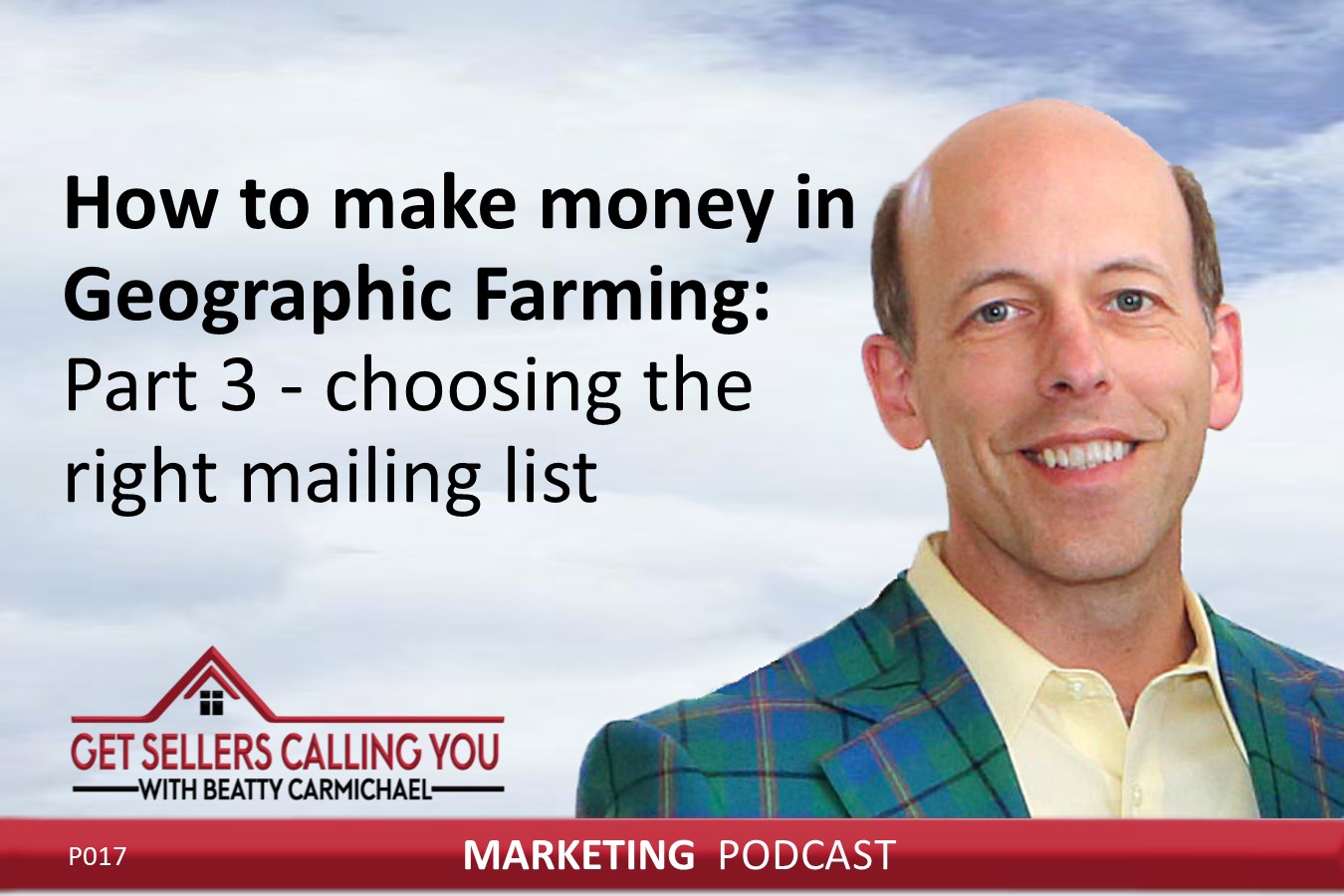
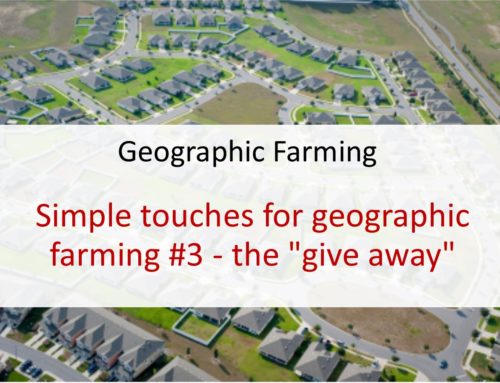
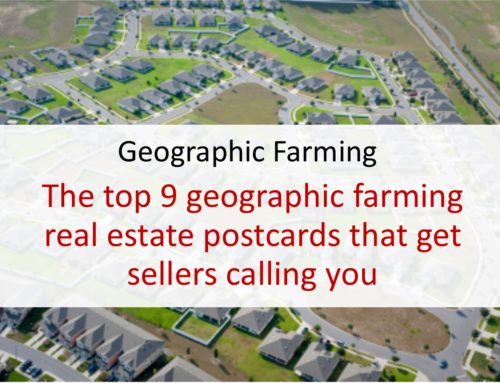
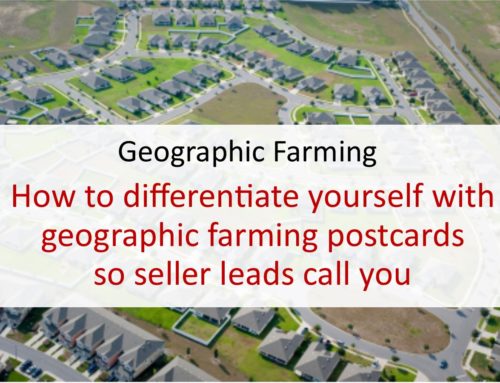

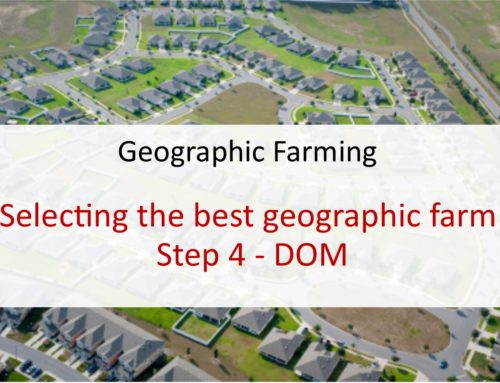

Leave A Comment